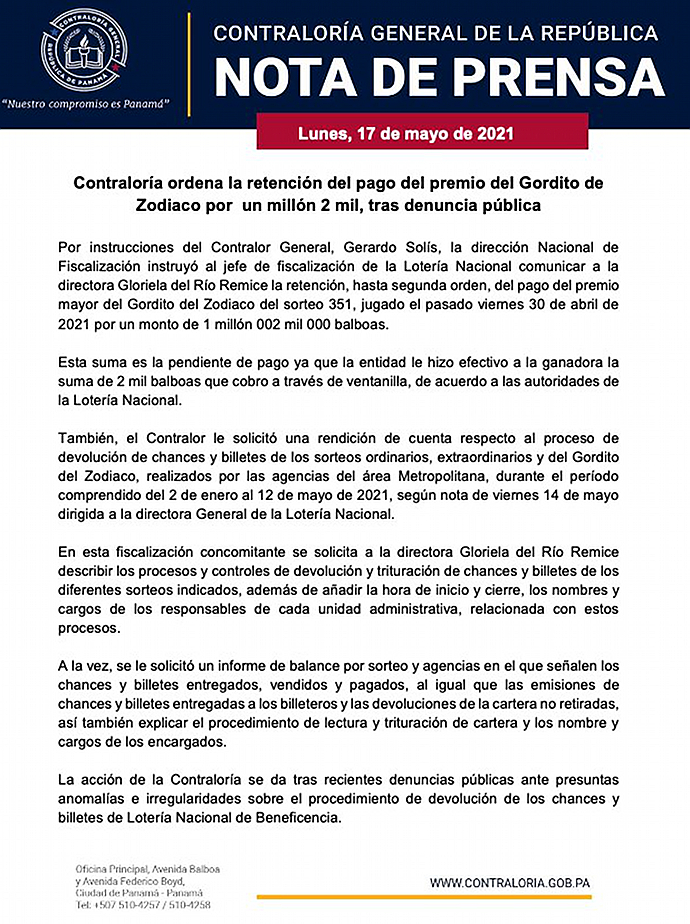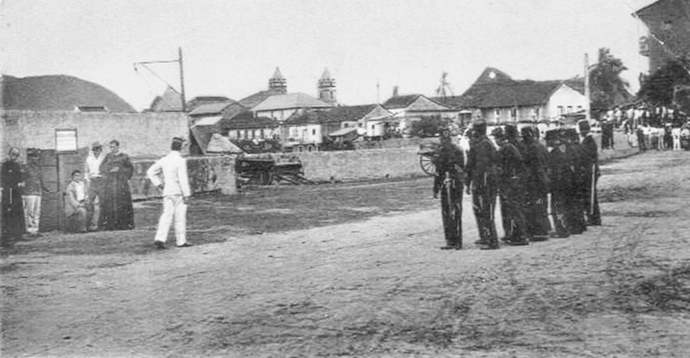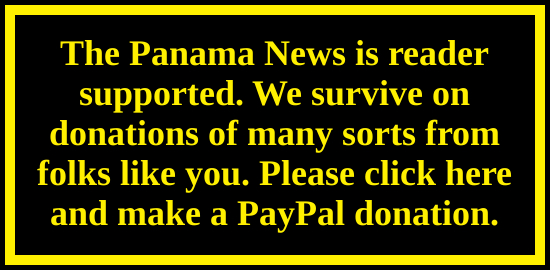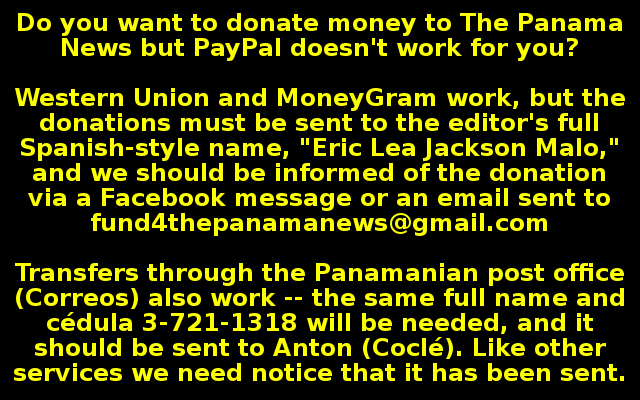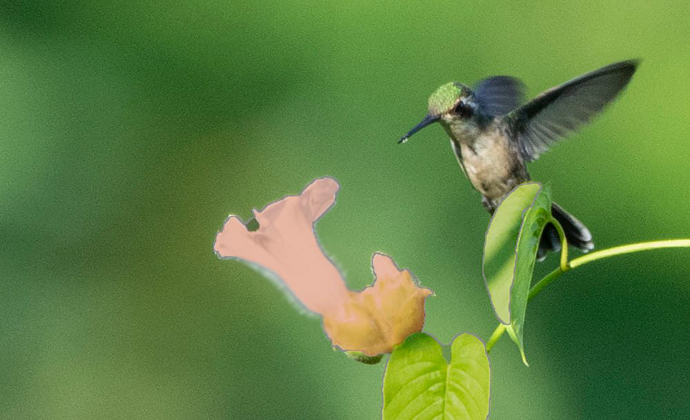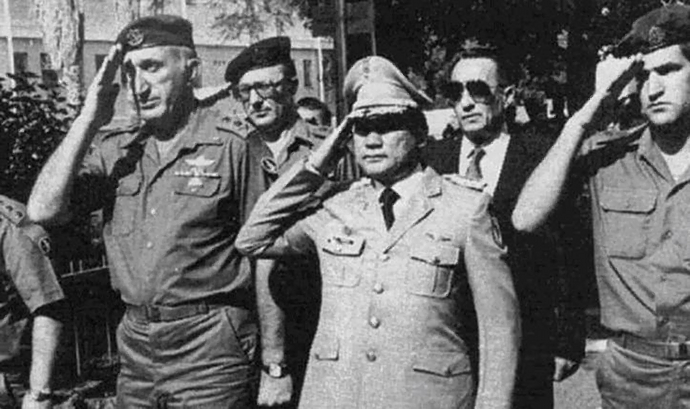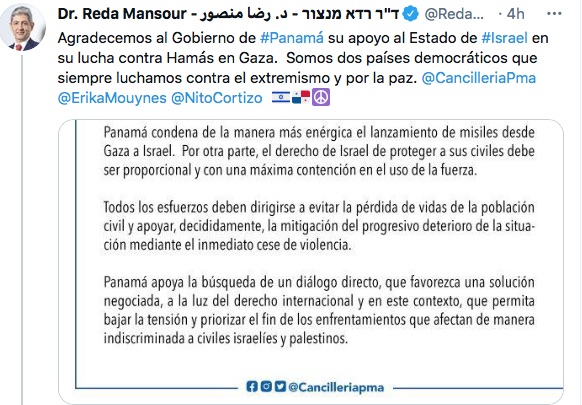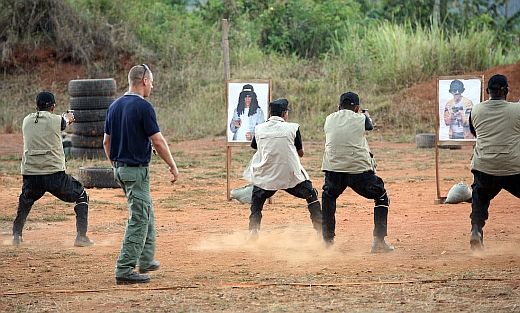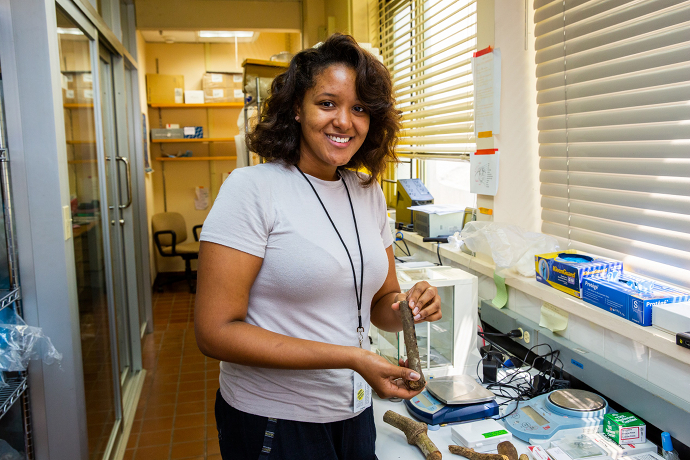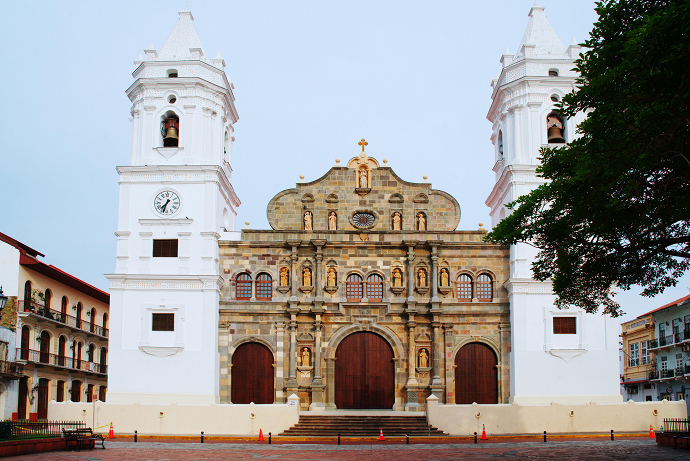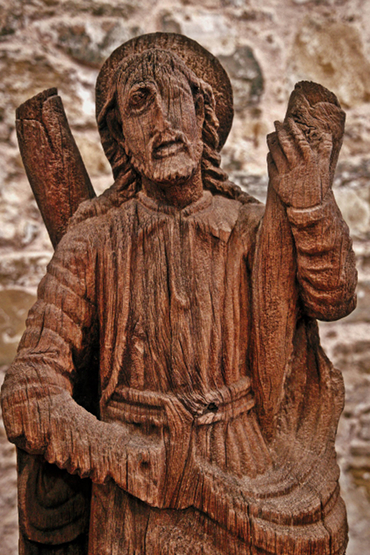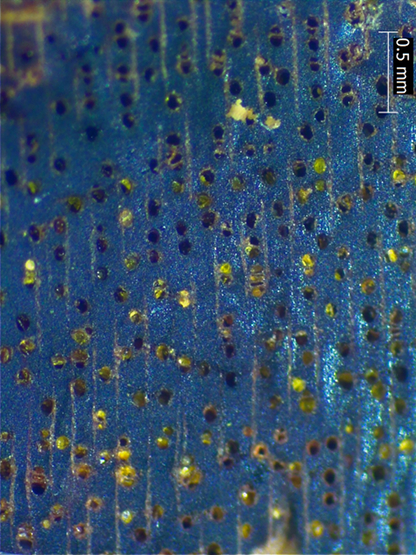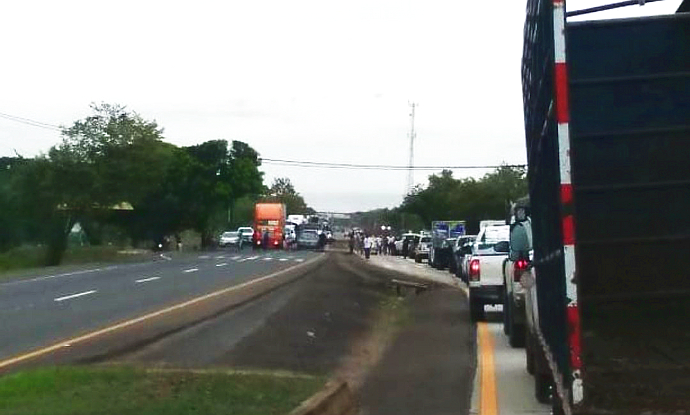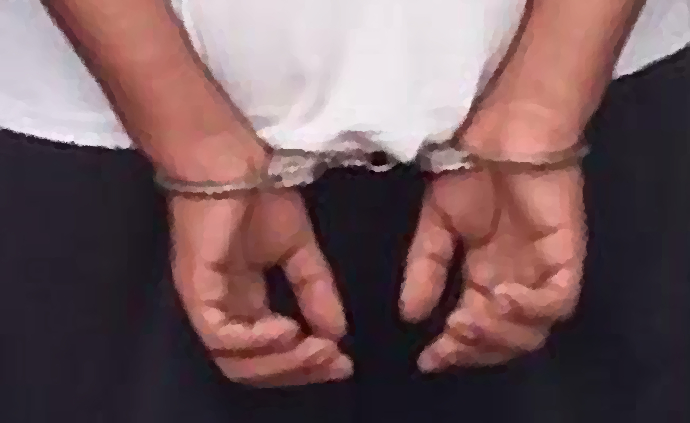“Fue atado a la silla, y cubiertos sus ojos con un paño negro. Los soldados de escolta se cuadraron, a cinco pasos de distancia. Se oía el silencio, cuando unas campanas comenzaron a doblar…. Un pañuelo blanco hizo la señal. Una descarga, y tras el humo un hombre herido de muerte inclinó la cabeza sobre el pecho. Hubo un movimiento de flanco; otra descarga; el herido volvió lentamente la cabeza; otra detonación y Victoriano intentó levantarse, abrió los brazos y murió” (Desertores). El general Victoriano Lorenzo, atado a una silla, ante el pelotón de fusilamiento.
Victoriano Lorenzo, el “cholo guerrillero”
por Olmedo Beluche
Gracias a la habilidad literaria de Ramón H. Jurado, unida a la agilidad mecanográfica de su compañera, Jilma Noriega, que nos han legado la novela histórica Desertores, nos llegan a través del tiempo los últimos momentos del hombre que hiciera temblar a la oligarquía panameña, que sacó de las cenizas al ejército liberal diezmado en la batalla del Puente de Calidonia, sobre cuyo cadáver se vendió la patria en 1903.
La vida de este general Victoriano Lorenzo, fue tan o más maravillosa que la de aquel otro general, Aureliano Buendía, conocida universalmente gracias a la pluma de Gabriel García Márquez. Ambos pelearon en la misma guerra, la de los Mil Días (1899-1902). Con la diferencia de que nada de lo que se dice del primero es ficción.
Carlos Francisco Changmarín, en El guerrillero transparente, lo retrata:
“El Cholo Victoriano no era un hombre viejo, sino joven; tampoco alto, al contrario, más bien bajo; como son los indios. Tenía la cara dura y afilada; de frente: ojos de tigre, labios gruesos y nariz fina…. en la guerra solía usar un sombrero blanco y alón, con cinta roja; el fusil, a la bandolera, y una espada grandísima para su tamaño. Encaramado así en la curumba de la sierra, era el verdadero tata de toda la gente de la montaña y el llano”.
Los liberales llegaron hasta las puertas de la ciudad de Panamá, en el Puente de Calidonia, el 25 de julio de 1900, fueron sistemáticamente diezmados por la metralla conservadora. Victoriano, previendo la derrota, recogió a sus hombres y emprendió el regreso a las montañas. El 18 de octubre, un batallón de soldados atacó la comunidad de El Cacao, buscando a Victoriano y las armas que se había llevado. Las mujeres fueron violadas, los ranchos y cosechas quemados, las armas desenterradas.
Allí, una asamblea de 500 personas, el 20 de octubre, ante el dantesco espectáculo dejado por las tropas conservadoras decidió que había que ir a la guerra y eligió a Victoriano Lorenzo como su General. “Los hombres levantaban los machetes y le gritaban: – ¡Sí! ¡Guerra! ¡Guerra! ¡Guerra! ¡Guerra! ¡Guerra!”. (Claudio Vásquez Vásquez. Mis memorias sobre el General Victoriano Lorenzo. Relatos de viva voz del Tte. Coronel Juan José Quirós Mendoza 1900-1902).
Había terminado la primera fase de la guerra civil, la que tenía como eje las demandas políticas, y había iniciado la segunda fase de la guerra, cuya demanda central eran las reivindicaciones sociales de los sectores más marginados de la sociedad, los campesinos pobres de origen indio, los cholos. Había terminado la guerra convencional y comenzando la guerra de guerrillas en el Istmo.
El Teniente Coronel Juan José Quirós, quien fuera secretario personal de Victoriano:
“Nuestro General coclesano no hablaba de principios políticos ni liberales ni conservadores… Es la lucha de los campesinos recluidos en las montañas que sufren la carga de los impuestos (incluyendo diezmos y primicias), la escasez de alimentos y los ultrajes de las autoridades y de arrogantes oficiales militares” (Mis memorias…).
La rima cadenciosa de Changmarín, El cholito que llegaría a general, resume el programa de lucha de Lorenzo:
“Fue la tierra tu bandera, tu grito, la libertad; tu esperanza, la igualdad para la cholada entera”.
El General Lorenzo trasladó sus tropas a Penonomé y estableció su cuartel general en La Negrita. Desde allí se hizo el cerco de Penonomé y se puso en jaque al ejército conservador, y se fue rehaciendo el ejército liberal.
En enero de 1901 se acercaron a La Negrita, dos jefes liberales del Istmo, Manuel Antonio Noriega y Manuel Patiño. Noriega le exigió a Victoriano ser reconocido como máximo Jefe Militar, lo cual fue rechazado. Victoriano lanzó a Noriega la histórica frase:
“Estoy informado y he observado, General Noriega, que usted se está escribiendo cartas con el Prefecto de Coclé en Penonomé. Eso no lo creo correcto porque LA PELEA ES PELEANDO. Si a mí me cogen preso me fusilan y, en cambio, a usted, que es blanco y es amigo del Prefecto, no le pasaría nada. Por tal razón yo no puedo aceptar esta situación”. (Mis memorias…).
Su arrojo e inteligencia militar fue reiteradamente demostrada desde la batalla de la Negra Vieja, hasta el sitio de Penonomé, la toma de Aguadulce, en Chiriquí, etc. Juan J. Quirós Mendoza lo describe:
“Victoriano era extraordinariamente valiente, pero humilde, sencillo, astuto y honrado; de una inteligencia vivaz; sus instrucciones siempre fueron justas… No era un santo ni un criminal: era un hombre… Generalmente permanecía con los hombros encogidos, encapotado, como ese pajarito que hay en nuestros bosques y que llamamos “cocorito”; respetuoso de las demás personas, cortés para saludar, y se desenvolvía con soltura ante sus colegas militares. No era un hombre ilustrado…, pero sabía discernir, leer, escribir y pensar perfectamente bien… Tenía una extraordinaria intuición para calcular las acciones, reacciones y decisiones de las demás personas… Era un buen director de grupo…”.
En agosto de 1901, mandó llamar a su amigo Belisario Porras, a quien reconoció como Jefe Civil y Militar. Esta fidelidad hacia Porras lo llevó a abandonar al General Domingo Díaz, el 16 de septiembre, pues éste se negó a reconocer la autoridad de Porras. En diciembre apareció Benjamín Herrera con una flotilla, numerosos soldados y buen armamento. Enseguida envió por Victoriano, con el cual se entrevistó en privado y reconoció el rango, pues sabía que la nueva invasión liberal no podría avanzar sin el apoyo del Cholo. Muy distinta fue la actitud de Herrera hacia Porras.
Herrera dedicó el año 1902, a controlar el interior, cuando, esta guerra casi ganada, empezó a ser influenciada por un hecho desconocido para sus actores aquí: la negociación de un tratado para construir el canal por Panamá entre Estados Unidos y Colombia. En Panamá la guerra llegó a su fin mediante un tratado firmado en el acorazado norteamericano Wisconsin, el 21 de noviembre de 1902 (justo dos meses antes de la firma del Tratado Herrán-Hay). Rubricaron por los conservadores Víctor M. Salazar y Alfredo Vásquez Cobos, y por los liberales Lucas Caballero y Eusebio A. Morales.
El Tratado del Wisconsin, además de la deposición de las armas de los sublevados y las garantías para sus vidas, el artículo 7, señalaba la elección democrática de un Congreso, cuyo primer objetivo sería aprobar “Las negociaciones relativas al Canal de Panamá”.
Se rumoró la existencia de cláusulas secretas del tratado, entre las que estaba la entrega, arresto y fusilamiento de Victoriano Lorenzo asumiendo como excusa al artículo 2, que la amnistía no ampararía a los que no se acogen al tratado y entreguen sus armas, ni impediría juicios por “delitos comunes” de los que se acusaba al Cholo Guerrillero.
A los pocos días se acusó a Victoriano de desconocer el tratado. Benjamín Herrera comisionó a Eusebio A. Morales para traer retenido a Lorenzo. Algunos liberales, encabezados por Buenaventura Correoso, hicieron infructuosas gestiones en pro de la libertad del General Lorenzo.
“El 14 de mayo (1903), a las dos de la tarde se instaló el Consejo de Guerra, presidido por Esteban Huertas.… Así, esa noche, el Consejo lo encontró culpable de los crímenes del “Panteón de Santa Fe”, de “Río del Caño”, “Chigoré”, “San Agatón”, “La Pintada” y “La Vaquilla”, condenándolo a la pena de muerte”. (Desertores).
Al día siguiente, casi a las cinco de la tarde se leía en voz alta: “Victoriano Lorenzo, natural de Penonomé, y vecino de Panamá, va a ser fusilado por varios crímenes. Si alguno levantase la voz pidiendo gracia o de alguna otra manera tratase de impedir la ejecución, será castigado con arreglo a las leyes” (Desertores)
A Victoriano no lo asesinaron “los colombianos”, como falsamente dicen los amanuenses de la burguesía panameña. Lo fusiló la más rancia oligarquía panameña que sentía por El Cholo un profundo odio de clase y de raza, a la vez que les infundía un hondo temor, porque fue el “indio” que se atrevió a rebelarse y los hizo comer suela de zapato en Penonomé.
Esos que hoy llaman “próceres de 1903”, que traicionaron a Colombia y vendieron el istmo de Panamá a los Estados Unidos pocos meses después, el 15 de mayo se mostraron repugnantemente groseros ante un hombre atado que era puesto ante el paredón. Así nos lo cuenta el escritor Rafael Ruiloba:
“Desde Bogotá llegó un telegrama del gobierno conservador donde se ordenaba que Victoriano Lorenzo no fuera fusilado. Pero la oligarquía panameña aceleró el fusilamiento.
Como en la mañana había pueblo protestando, al mediodía vino la turba conservadora agitada por Francisco de La Ossa, cuñado de Manuel Amador Guerrero, quien llamaba a los Chanis, a los De la Guardia, a los Arias, a los Arosemena, a los Díaz, a los de Obaldía, Boyd, Lefevre, etc., para que llevaran su gente a neutralizar las protestas por el fusilamiento. Este grupo fue denunciado en 1904 por Belisario Porras, como la camándula de la traición. De La Ossa según la testigo “subía y bajaba Las Bóvedas gritando: Vengan a ver morir a un perro”.
…
Entre las 9 y las 11 de la noche tocaron corneta para que todo el mundo cerrara las puertas y no vieran dónde iba el cholo. El lugar exacto donde lo enterraron nadie lo conoce pero fue allí en el cementerio Amador” (El doble fusilamiento del general Victoriano Lorenzo).
A su cadáver se le negó el ataúd traído por correligionarios, fue llevado en carreta al cementerio. Buscando borrar su recuerdo, los oligarcas mandaron cambiar sus despojos de sitio. Seis meses después se separó a Panamá de Colombia y se impuso el Tratado Hay-Bunau Varilla.
Cantemos con Changmarín:
“Victoriano combatiente, /tu muerte el yanqui exigió; / la traición te condenó/ por unas cuantas monedas/ pero tu recuerdo queda…/ El pueblo no te olvidó”.
Contact us by email at / Contáctanos por correo electrónico a fund4thepanamanews@gmail.com
To fend off hackers, organized trolls and other online vandalism, our website comments feature is switched off. Instead, come to our Facebook page to join in the discussion.
Para defendernos de los piratas informáticos, los trolls organizados y otros actos de vandalismo en línea, la función de comentarios de nuestro sitio web está desactivada. En cambio, ven a nuestra página de Facebook para unirte a la discusión.
~ ~ ~
These announcements are interactive. Click on them for more information.
Estos anuncios son interactivos. Toque en ellos para seguir a las páginas de web.



